Podcast: Play in new window | Download
Subscribe: Apple Podcasts | RSS
 The Aztecs called this place Tlahuizcalpantecuhtli, the Temple of the Morning Star. It is a massive pyramid in the center of the ancient city of Tula, the civic-ceremonial capital of the Toltecs. On the top of the pyramid are curious stone carvings. They are giants. Standing over 15 feet tall and weighing several tons each, these basalt carvings in human form are the masters of all they survey. Called the Atlantean Statues – or in Spanish, los atlantes – these huge sculptures are perhaps the most enigmatic surviving artifacts of the Toltec civilization which ruled central Mexico about 1,000 years ago. No one knows how these figures were made or how they were transported to the top of the pyramid.
The Aztecs called this place Tlahuizcalpantecuhtli, the Temple of the Morning Star. It is a massive pyramid in the center of the ancient city of Tula, the civic-ceremonial capital of the Toltecs. On the top of the pyramid are curious stone carvings. They are giants. Standing over 15 feet tall and weighing several tons each, these basalt carvings in human form are the masters of all they survey. Called the Atlantean Statues – or in Spanish, los atlantes – these huge sculptures are perhaps the most enigmatic surviving artifacts of the Toltec civilization which ruled central Mexico about 1,000 years ago. No one knows how these figures were made or how they were transported to the top of the pyramid.
In order to understand the Atlantean figures we must first understand the context in which we find them. The statues dominate the abandoned ancient city of Tula located in the central highlands of Mexico in the present-day Mexican state of Hidalgo about 45 miles from Mexico City. According to archaeologists and anthropologists, the name “Tula” comes from the Aztec phrase Tollan Xicocotitlan, which means “place where the reeds grow.” The Aztecs later shortened this to Tollan which has been more generally used to denote any urban center. The city of Tula has long been believed to be the capital of the Toltec Empire, although some archaeologists describe the Toltecs politically as having a kingdom rather than an empire. Some believe that the term “Toltec” is best used to describe a civilization instead of a political entity. In any event, the Toltecs came to prominence in the power vacuum left by  the fall of Teotihuacan at around the 8th Century AD. The first village at the site of the present-day ruins of Tula was established around 400 AD. Archaeologists call the first phase of occupation at this site “Tula Chico” or “Little Tula.” At its height, Tula Chico had well over 20,000 people and covered about 6 square kilometers in area. Between 850 and 900 AD the site known as Tula Chico was mysteriously abandoned. Soon after people abandoned this site, a new city was built on top of the old one and archaeologists call this city “Tula Grande,” or “Big Tula.” This new Tula grew to be the largest city in Mexico at its height around 1,000 years ago with an urban population of over 50,000 with 20,000 or so people living in the immediate countryside surrounding the city. The extended urban area stretched to about 1,000 square kilometers. As the center
the fall of Teotihuacan at around the 8th Century AD. The first village at the site of the present-day ruins of Tula was established around 400 AD. Archaeologists call the first phase of occupation at this site “Tula Chico” or “Little Tula.” At its height, Tula Chico had well over 20,000 people and covered about 6 square kilometers in area. Between 850 and 900 AD the site known as Tula Chico was mysteriously abandoned. Soon after people abandoned this site, a new city was built on top of the old one and archaeologists call this city “Tula Grande,” or “Big Tula.” This new Tula grew to be the largest city in Mexico at its height around 1,000 years ago with an urban population of over 50,000 with 20,000 or so people living in the immediate countryside surrounding the city. The extended urban area stretched to about 1,000 square kilometers. As the center 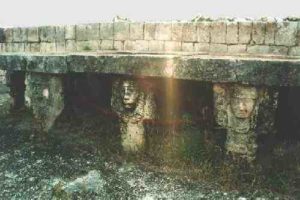 of trade, some believe that half of the population of Tula was engaged in some sort of craft production including work in stone and ceramics. In fact, the very word “Toltec” in the Nahuatl language of the Aztecs means “skilled worker” which later broadly meant “urban person.” The items produced in Tula were traded for goods coming from distant places such as Costa Rica. The influence of the Toltec civilization in Mexico can be seen as far away as the Yucatán, specifically at the sites of Chichén Itzá and Mayapán. In the former set of ruins we also see Atlantean figures at the Temple of the Warriors, but they are smaller in scale compared to the ones found at Tula. Archaeologists have debated for years about whether or not the sites identified as Toltec in the faraway Yucatán were just copying Tula, were colonies of the city or were conquered by it. All can agree and plainly see the strong influence coming from the Toltecs, including the smaller Atlanteans. Whether a trading empire, influential kingdom city-state or cultural movement, the Toltec civilization ended with the fall of Tula to outside northern invaders sometime in the 12th Century. Most of the living quarters around the ceremonial center were abandoned by 1150 AD and there is evidence of a huge fire sweeping through the city at about this time along with the destruction and looting of much of the massive buildings of Tula. A disputed king’s list created by ethno-historians show that the last ruler of Tula, and perhaps the Toltec civilization,
of trade, some believe that half of the population of Tula was engaged in some sort of craft production including work in stone and ceramics. In fact, the very word “Toltec” in the Nahuatl language of the Aztecs means “skilled worker” which later broadly meant “urban person.” The items produced in Tula were traded for goods coming from distant places such as Costa Rica. The influence of the Toltec civilization in Mexico can be seen as far away as the Yucatán, specifically at the sites of Chichén Itzá and Mayapán. In the former set of ruins we also see Atlantean figures at the Temple of the Warriors, but they are smaller in scale compared to the ones found at Tula. Archaeologists have debated for years about whether or not the sites identified as Toltec in the faraway Yucatán were just copying Tula, were colonies of the city or were conquered by it. All can agree and plainly see the strong influence coming from the Toltecs, including the smaller Atlanteans. Whether a trading empire, influential kingdom city-state or cultural movement, the Toltec civilization ended with the fall of Tula to outside northern invaders sometime in the 12th Century. Most of the living quarters around the ceremonial center were abandoned by 1150 AD and there is evidence of a huge fire sweeping through the city at about this time along with the destruction and looting of much of the massive buildings of Tula. A disputed king’s list created by ethno-historians show that the last ruler of Tula, and perhaps the Toltec civilization, 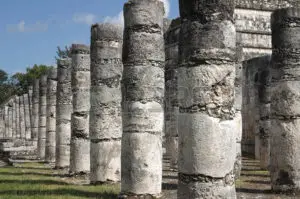 was a king called Ce Acatl Topilitzin and the last year of his rule was 1179 AD. In the 1400s, one of the early rulers of the Aztec Empire, a king called Izcoatl, burned all the books related to the Toltecs. Much knowledge about Tula and the Atlantean statues was lost as a result of this ruler’s zeal to get rid of all things from the previous civilization that might have challenged his power or legitimacy. When the Spanish arrived to Mexico in the early 16th Century, Tula was occupied by a fraction of the population it had once had, and most of the people were ethnically Aztec, as the surrounding lands were part of the Aztec Empire. The city never saw its former glory again. Early Spanish chroniclers noted that craftspeople still lived in Tula creating things out of stone, feathers and pottery. As with the great monuments of Peru or Egypt, or the gigantic stone heads of Easter Island, surviving people living in and around the ruins of Tula at the time of Spanish contact had no idea how the Atlantean statues were made or what their significance was.
was a king called Ce Acatl Topilitzin and the last year of his rule was 1179 AD. In the 1400s, one of the early rulers of the Aztec Empire, a king called Izcoatl, burned all the books related to the Toltecs. Much knowledge about Tula and the Atlantean statues was lost as a result of this ruler’s zeal to get rid of all things from the previous civilization that might have challenged his power or legitimacy. When the Spanish arrived to Mexico in the early 16th Century, Tula was occupied by a fraction of the population it had once had, and most of the people were ethnically Aztec, as the surrounding lands were part of the Aztec Empire. The city never saw its former glory again. Early Spanish chroniclers noted that craftspeople still lived in Tula creating things out of stone, feathers and pottery. As with the great monuments of Peru or Egypt, or the gigantic stone heads of Easter Island, surviving people living in and around the ruins of Tula at the time of Spanish contact had no idea how the Atlantean statues were made or what their significance was.
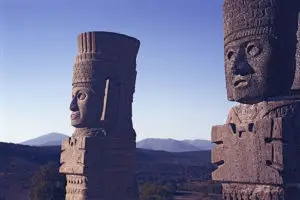 Given their Mesoamerican context, modern archaeologists have established a firm interpretation of what the Atlantean statues at Tula mean. Structurally, they were said to support a wooden or thatched roof at the top of the pyramid, like columns. Artistically, they are said to represent warriors, possibly soldiers following the god-king Quetzalcoatl. Quetzalcoatl, also called the Feathered Serpent, is associated with Venus; as the story goes when he died here on earth he went up to the sky and became the Morning Star. The name of the pyramid – Tlahuizcalpantecuhtli – means “The Temple of the Morning Star.” The statues, according to archaeologists, are wearing hats of snakeskin and feathers, solidifying the claim to be associated with the feathered serpent god. The colossal figures have breastplates in the shape of butterflies, also symbolic of Quetzalcoatl, shields on their backs and they are carrying weapons. The conclusion is that the statues represent warriors. Further support is given to the warlike nature of the figures by the association made with their counterparts. The similar figures found in the Yucatán can be found in a place called the Temple of the Warriors. Whatever their definitive purpose, the Atlantean figures took much time to make and for that reason alone they are very significant. In the modern age, we are just a little unclear as to their exact meaning.
Given their Mesoamerican context, modern archaeologists have established a firm interpretation of what the Atlantean statues at Tula mean. Structurally, they were said to support a wooden or thatched roof at the top of the pyramid, like columns. Artistically, they are said to represent warriors, possibly soldiers following the god-king Quetzalcoatl. Quetzalcoatl, also called the Feathered Serpent, is associated with Venus; as the story goes when he died here on earth he went up to the sky and became the Morning Star. The name of the pyramid – Tlahuizcalpantecuhtli – means “The Temple of the Morning Star.” The statues, according to archaeologists, are wearing hats of snakeskin and feathers, solidifying the claim to be associated with the feathered serpent god. The colossal figures have breastplates in the shape of butterflies, also symbolic of Quetzalcoatl, shields on their backs and they are carrying weapons. The conclusion is that the statues represent warriors. Further support is given to the warlike nature of the figures by the association made with their counterparts. The similar figures found in the Yucatán can be found in a place called the Temple of the Warriors. Whatever their definitive purpose, the Atlantean figures took much time to make and for that reason alone they are very significant. In the modern age, we are just a little unclear as to their exact meaning.
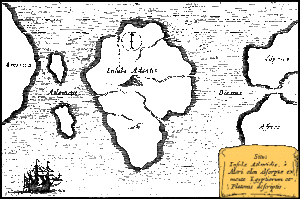 In the 1970s alternative theories about the Toltecs and the Atlantean figures began to emerge. Before we begin this part of the podcast, we must explain that the word “Atlantean” was given to these statues because of their supposed stance and their similarity to load-bearing figures of the mythical character of Atlas of the Old World. Many people misinterpret the very word “Atlantean” to mean that the statues had a direct connection to the fabled lost continent of Atlantis. The meaning and origin of the word aside, researchers in the alternative histories and “ancient astronauts” fields have tied these statues to everything from a forgotten super civilization that spanned the earth before the Biblical flood to ancient extraterrestrials. One online researcher has connected the word “Tula” with the ancient reference to “Thule,” a mythical island on par with the lost continents of Atlantis or Lemuria. The early Greek astronomer Geminus of Rhodes first mentions the mythical land of Thule a few centuries before Christ and calls it “The place where the sun goes to rest.” This would place Thule somewhere in the Atlantic Ocean or beyond. This mythical western land was later referenced by the Roman poet Virgil
In the 1970s alternative theories about the Toltecs and the Atlantean figures began to emerge. Before we begin this part of the podcast, we must explain that the word “Atlantean” was given to these statues because of their supposed stance and their similarity to load-bearing figures of the mythical character of Atlas of the Old World. Many people misinterpret the very word “Atlantean” to mean that the statues had a direct connection to the fabled lost continent of Atlantis. The meaning and origin of the word aside, researchers in the alternative histories and “ancient astronauts” fields have tied these statues to everything from a forgotten super civilization that spanned the earth before the Biblical flood to ancient extraterrestrials. One online researcher has connected the word “Tula” with the ancient reference to “Thule,” a mythical island on par with the lost continents of Atlantis or Lemuria. The early Greek astronomer Geminus of Rhodes first mentions the mythical land of Thule a few centuries before Christ and calls it “The place where the sun goes to rest.” This would place Thule somewhere in the Atlantic Ocean or beyond. This mythical western land was later referenced by the Roman poet Virgil  in his 29 BC 4-book work, The Georgics, in which he introduces “Ultima Thule” which is poetically described as a faraway land or unattainable goal. Did these ancients writing over 2,000 years ago know of a lost content whose refugees founded a Mexican civilization? Mainstream academia, of course, says “no.” Others cite similarities in the way the Atlantean figures look compared to other statues around the world, specifically to those found in the pre-Inca site of Tiahuanaco in South America and those discovered from Ancient Egypt. Archaeologists chalk up all similarities to sculptures from other parts of the world to pure chance.
in his 29 BC 4-book work, The Georgics, in which he introduces “Ultima Thule” which is poetically described as a faraway land or unattainable goal. Did these ancients writing over 2,000 years ago know of a lost content whose refugees founded a Mexican civilization? Mainstream academia, of course, says “no.” Others cite similarities in the way the Atlantean figures look compared to other statues around the world, specifically to those found in the pre-Inca site of Tiahuanaco in South America and those discovered from Ancient Egypt. Archaeologists chalk up all similarities to sculptures from other parts of the world to pure chance.
In the 1970s, with the popularity of the ancient astronaut movement came greater scrutiny of the massive statues atop the Tula pyramid. In popular pulp paperbacks such as Chariots of the Gods? and The Outer Space Connection, the figures become representatives of an ancient space-faring race. It’s important to note here that the ancient city of Tula was astronomically aligned, like many larger cities in ancient Mexico, and its inhabitants were cognizant of the movements of the planets and stars. The city was abandoned suddenly and the mystery of what happened to the people and where they went is easily solved by saying the Toltecs may have not only abandoned Tula, but they left the earth. Back to the statues themselves, the snakeskin/feather hats become spacesuit helmets. The butterfly 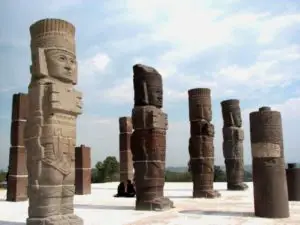 breastplate and its corresponding shield on the backs of the gigantic figures become elements of a jetpack. Much has been discussed about what the Atlantean statues have in their hands. While archaeologists see arrows and the common Mesoamerican spear-thrower called an atlatl, ancient aliens theorists see advanced laser-based weaponry. Upon closer examination, some of the statues do indeed look like they are carrying something reminiscent of a phaser rifle from Star Trek. As mentioned earlier, as no written records exist from the time that the statues were supposedly carved and placed on top of the pyramid, no one knows exactly what they mean, who carved them and for what purpose, or how they were transported to the top of the pyramid. Again, we are confronted with an unsolved mystery of the ages which begs more investigation and research.
breastplate and its corresponding shield on the backs of the gigantic figures become elements of a jetpack. Much has been discussed about what the Atlantean statues have in their hands. While archaeologists see arrows and the common Mesoamerican spear-thrower called an atlatl, ancient aliens theorists see advanced laser-based weaponry. Upon closer examination, some of the statues do indeed look like they are carrying something reminiscent of a phaser rifle from Star Trek. As mentioned earlier, as no written records exist from the time that the statues were supposedly carved and placed on top of the pyramid, no one knows exactly what they mean, who carved them and for what purpose, or how they were transported to the top of the pyramid. Again, we are confronted with an unsolved mystery of the ages which begs more investigation and research.
REFERENCES (This is not a formal bibliography)
The Aztecs, the Maya and their Predecessors by Muriel Porter Weaver
Chariots of the Gods? by Erich von Däniken
Unexpected Faces in Ancient America by Alexander von Wuthenau
Various online sources

3 thoughts on “The Gigantic Atlantean Statues of the Toltecs”
This sucks
lol
Very informative and interesting. Photos of the statues are simply stunning